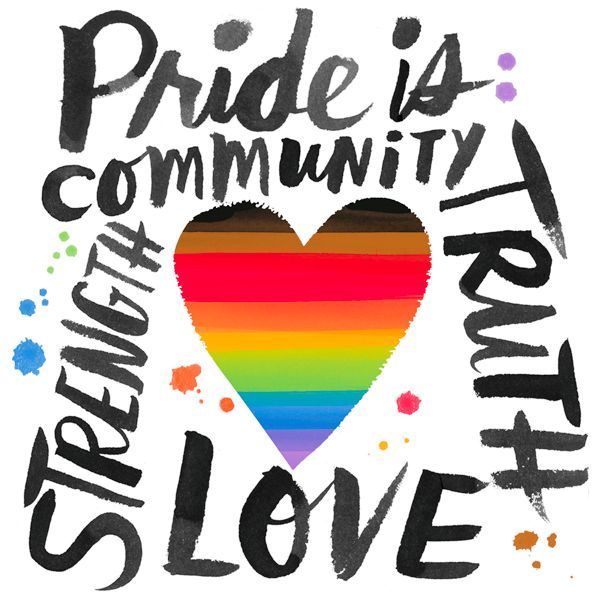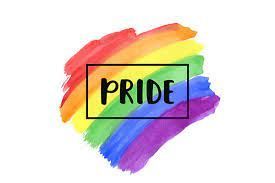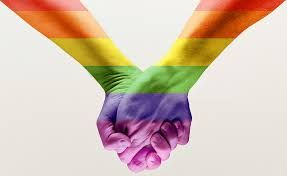The month of June brings many thoughts and ideas to mind – the year is nearly half over; school is out; warm weather and sunshine are here. However, June also signifies Pride Month, where a community of individuals are still fighting for acceptance.

WHAT IS PRIDE MONTH? THE HISTORY BEHIND THIS MONTH AND ITS IMPORTANCE?
Pride month is meant to increase the visibility of those who were previously shamed, ostracized and stigmatized for being themselves. It is held in the month of June because the “flash” point for fighting for LGBTQ rights in the United States, The Stonewall Riots, began on June 28, 1969.
After years of police harassment, patrons and neighborhood residents of Greenwich Village, N.Y., a predominately LGBTQ neighborhood, reached a boiling point during yet another raid at the Stonewall Club, and they fought back by throwing objects at the arresting officers and police vehicles becoming a full-blown riot. A year later, community members marched through local streets in commemoration of the event and honoring the fight and those they lost, dubbing it “Christopher Street Liberation Day,” which eventually became “Gay Pride” and later, “Pride” to include all under the LBGTQ community.
This month is important, so no one feels the need to hide who they are. So many individuals have fought for the rights that many in the LGBTQ community have today. For those who struggle with their sexuality or gender, it shows them they are not alone, they are not “wrong” or “a sin,” but simply people who want to be accepted and loved for themselves. There is also still much to be done to protect the rights of the LGBQT community and to educate those that continue to look down on them or judge them.
WHAT DO THE COLORS OF THE FLAG REPRESENT?
Gilbert Baker, the designer of the rainbow Pride Flag, was encouraged by the California’s first openly gay politician, Harvey Milk, to create a symbol to unify the gay community and later, to include the transgender community. (The first openly gay elected official in the USA was Kathy Kozachenko in Ann Arbor, MI, in 1974, for Ann Arbor City Council).

The flag has changed a bit over the years, but each color has its own meaning. Baker’s original design included “hot pink,” which was meant to celebrate the joy of sex and turquoise represents art, but both colors were difficult to obtain, and it was decided they were included in other areas of the flag. The more common Pride flags are now more aligned with the actual rainbow presentation: red is for life, orange is for healing, yellow is sunlight, green is nature, blue/indigo is harmony and violet are for spirit. More recent versions also included triangles that represent Transgender people and people of color.
MISCONCEPTIONS AND CHALLENGES THE LBGTQ COMMUNITY FACES:
Unfortunately, there are many misconceptions in the community regarding the LBGQT community. One of the biggest and most ridiculous is that this is all about sex, which it is not. People in the LGBTQ community want to live the same life as those outside the LGBTQ community do – they want love, acceptance, family, a sense of belonging and to feel safe.
Another misconception is this community is putting their personal business in our faces or they are trying to “recruit” people or being around or raised by LGBTQ people will “turn you” into being a person of this community. If straight people can show public signs of affection, then everyone who is not straight should be able to as well. If you are not on the spectrum of gay/bi/trans, there is nothing that can ‘turn you” if it was not already IN you to begin with. It is biology, not virology.
There are some challenges in this community, the biggest challenge being discrimination. This often makes it difficult for members of this community to find housing, start/raise a family or adopt children. Hatred and violence against LGBTQ people are another obstacle. Many fears going out in public with their partners, much less show any affection towards them, for fear of physical violence. Members of this community do not want special treatment or attention but rather they want to be accepted and viewed as any other human being. Today, public policies are being changed so that those in the LGBTQ community do not have to have their existence debated in a court and have the same liberties, rights and protections under the laws as straight and cisgender people.

STIGMA FACING TEENS IN THE LGBTQ COMMUNITY
Teens today are dealing with some stigma around the LGBTQ community. However, there is a driving force for inclusivity in high schools, but there is still a lot of push back from parents and even some school staff. Some schools have been trying to provide support by forming LGBTQ groups or Gay Straight Alliance (GSA) clubs. In Stark County, the following high schools have organizations – Alliance, GlenOak, North Canton Hoover, Jackson and Northwest. This is a start, but more work needs to be done about the harassment or intolerance by students and teachers.
Today, there is significance progress with increasing visibility of LBGTQ youth in the community. These young adults still face obstacles with family members who disagree with who they are and still face enormous amounts of discrimination.
Youth who are struggling with their identity should not have to “come out” anymore. Young people should be free to love whom they love and for families to be ok with who they choose to date as they do with non-LGBTQ youth. If youth are struggling, they should speak with a counselor, a trusted friend or a trusted adult. Help is available nationally with the Trevor Project Helpline at 1.866.488.7386 or locally call StarkHelpCentral at 330.455.6644 or Coleman Crisis Center at 330.455.6000.
Pride month is more than just displaying a flag, which is a nonverbal and visible way for member of the LGBTQ community to feel welcome. This is also about seeing representation of themselves in a space and in their community. Everyone can be inclusive in their space highlighting straight, cisgender couples and families. Seeing families that have same sex couples or transgender couples needs to be normalized. Above all else, listen to the individual and use the names, pronouns and identifiers they ask you to use.
If you or someone you know is struggling with gender identification, please call C&A at 330.433.6075.
C&A’s clinical supervisor
Linda Clark provided the content for this blog post. Linda has been a staff member for three years and is knowledgeable in the
LGBQT community. She has 10 years of clinical experience and is trained as an LGBTQ+ Affirming Therapist through the Azalea Institute in Akron in 2018.
RECENT POSTS












